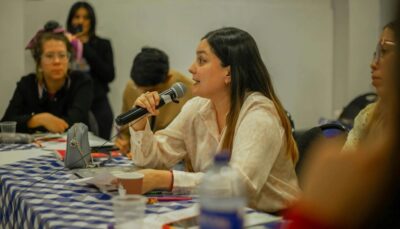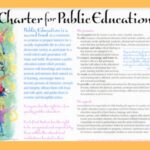IPE/BC is an independent, non-partisan organization, however we recognize that IPE/BC Associates and guest authors hold a range of views and interests relative to public schools, education issues, and the political landscape in BC. Perspectives is an opportunity for Associates and others to share their ideas in short, accessible essays.
Denying the reality of education underfunding
August 3, 2025
By Moira Mackenzie
Gaslighting: a form of manipulation where someone is led to question their own reality, memory, or sanity, often by denying or misrepresenting events or situations.
Once again, prior to the end of June, BC’s school boards approved their budgets for the coming school year and, once again, faced with significant shortfalls, many districts have approved even more budget cuts. The persistent gap in funding, over many years and through governments of differing political stripes, has resulted in a public education system now under severe stress. We know that the staffing shortages, overcrowding, lack of sufficient funding for inclusion, dwindling supplies and program losses have already created deep cracks in what should be a strong, stable, accessible system that fully supports all students. If anything, the persistent and decades long denial of the needs and reality in our public schools begins to feel like gaslighting.
 Parents/caregivers, support staff, teachers, trustees, advocacy organizations, and, in a number of cases, young people themselves are speaking out. They know well the impact of underfunding on student learning and well-being, and on the school community as a whole. They’ve been imploring the government to address the shortfalls, reverse the losses, and make public education a high priority. Their perspectives should be welcomed and respected.
Parents/caregivers, support staff, teachers, trustees, advocacy organizations, and, in a number of cases, young people themselves are speaking out. They know well the impact of underfunding on student learning and well-being, and on the school community as a whole. They’ve been imploring the government to address the shortfalls, reverse the losses, and make public education a high priority. Their perspectives should be welcomed and respected.
Yet, even as the pressure on public schools escalates, the responses from successive governments have changed very little over many years and, unfortunately, too often serve to dismiss the reality of all those directly connected with our valued public schools.
Let’s look at the prevailing and, unfortunately, enduring government messaging.
- These are tough decisions that boards have to make at the local level.
True, the decisions are excruciating, but it’s the province that controls the funding. When the actual needs of public schools and the complexities of supporting students aren’t adequately accounted for in the pot of money given to each board, the conditions inevitably deteriorate. As an example, while I applaud successive provincial governments that have advanced inclusion in public education, the funding falls far short of the support and services needed. In 2023/24 alone, there was a $340 million dollar shortfall between what the government provided and what school districts needed to spend on inclusive education.
The government transfers public tax dollars to school districts and boards are required to set their budgets within the funds they’re given or be subject to dismissal. It’s the provincial government dictates the size of the pie, regardless of whether it’s adequate, and boards are simply left to slice it up. We can safely conclude that no district would even consider cutbacks if the funding matched the costs.
given or be subject to dismissal. It’s the provincial government dictates the size of the pie, regardless of whether it’s adequate, and boards are simply left to slice it up. We can safely conclude that no district would even consider cutbacks if the funding matched the costs.
- Every student, no matter where their families live, receives the same level of support.
This messaging appears to answer a question that was not being asked. We can all agree that students, regardless of where their families live, should have access to quality, accessible, inclusive public education. It’s the level of funding that is the issue, not the location of the students.
- Education is receiving the highest funding ever. We’ve increased education dollars every year.
Of course, the education funding figure is the highest ever. Districts are primarily funded based on student enrollment numbers and, as we know, the student population in BC has increased significantly. The total number of K-12 public school students was 521,038 in 2014/15. Last year, public school enrolment in BC reached a historical high point of 614, 869.[ii]
In addition, it simply stands to reason that, with inflationary pressures and rising costs, more funding would be required just to deliver the  same services as the year before. It’s very likely that the dollars allocated to most, if not all government services, are the “highest ever.” But, in terms of per pupil spending in education, BC does not have a record to crow about. According to Stats Can updated figures for the year 2022 (latest available) BC ranked fourth from the bottom of the provinces and territories in dollars per pupil dedicated to public education. [iii]
same services as the year before. It’s very likely that the dollars allocated to most, if not all government services, are the “highest ever.” But, in terms of per pupil spending in education, BC does not have a record to crow about. According to Stats Can updated figures for the year 2022 (latest available) BC ranked fourth from the bottom of the provinces and territories in dollars per pupil dedicated to public education. [iii]
Further, it’s telling to look at the percentage of the gross provincial product being transferred to school districts to fund their operating costs. That is, how does the amount of tax dollars given in operating grants to school districts compare year over year as a percentage of Gross Provincial Product. In 2022, as reported by Stats Can the percentage going to education in BC was 3.0%, the second lowest among the provinces and territories in Canada. [iv]
Considered another way, for the 2023/24 school fiscal year, BC reported allocating grants totaling $6,754 billion across the province’s sixty school districts. If BC were to spend at the “% of GDP” rate that it did in back in the year 2000, this budgetary allocation would increase by $3.8 billion to $10.552 billion. [v]
- Our education system is doing very well. Wonderful things are happening in BC schools, our students continue to score highly on international exams and other jurisdictions are using the BC curriculum.
We agree- amazing things are happening in BC public schools and that’s entirely to the credit of teachers, support staff, parents, administrators, students and the school community overall. It’s not at all a sign that the funding matches the needs and it’s certainly not sustainable as pressures mount. And, when another jurisdiction choses to use the K-12 curriculum developed in BC through the hard work contributed by teams of BC teachers, they are not also endorsing the conditions under which it is being taught. These are two different realities.
- We’re in difficult and uncertain times. We can’t afford to boost education funding.

To that, I would say, we simply can’t afford not to. We know that quality, accessible, inclusive public education is key to a healthy democracy and thriving society. We believe that in dark and uncertain times, support for public education is all the more important. Today’s young people are growing up a world that’s facing incredibly complex problems and threatening conditions. Providing students with the skills, knowledge and supports to help them to not only cope but contribute in a meaningful way is more urgent than ever. It’s a sound investment in our collective future.
Further, at a time when public schools are in dire need, it’s impossible to justify the substantial sum of public tax dollars going to private schools. In 2024/25 alone the total was a whopping $570 million. [vi]
Just imagine the gaps that could be filled if these dollars stayed in the public system each year.
- Education funding isn’t a top priority for voters.
An additional and somewhat less public reason sometimes given for the funding crisis is that spending on public education is not identified as a top priority by a majority voters and therefore is not a “vote getter” issue. If this is so, it’s understandable. In contrast to healthcare, for example, the daily impact of education underfunding may not be as evident to individuals who don’t directly engage with the system. However public education truly is a foundational public service- a societal benefit that we can all rely on whether or not we’re directly connected to a school.
As chronic underfunding takes a bigger and bigger toll, a wise and long overdue move for government would be to invite feedback and learn from those who experience the pressures and tensions in public schools firsthand, rather than appearing, however inadvertently, to deny their reality. Gaslighting is a term that may occur to many who struggle to secure the services and support children and youth need. The broken record responses are doing no one any good; it’s really time they were traded for a much more meaningful dialogue.
[i] Beyond the Gap- https://instituteforpubliceducation.org/beyond-the-gap-the-need-for-accountable-education-funding-that-demonstrates-that-society-values-inclusion/
[ii] Government of BC – https://www.bcbudget.gov.bc.ca/2025/sp/pdf/ministry/educ.pdf and https://news.gov.bc.ca/releases/2015EDUC0051-001334
[iii] StatsCan tables 37-10-0064, 37-10-0065, 37-10-0007 and 37-10-0153
[iv] The Facts on Education Funding https://instituteforpubliceducation.org/wp-content/uploads/2024/07/BC-Education-Funding-Facts.pdf
[v] The Facts on Education Funding Facts- https://instituteforpubliceducation.org/wp-content/uploads/2024/07/BC-Education-Funding-Facts.pdf
[vi] Public Funds for Public Schools- https://instituteforpubliceducation.org/wp-content/uploads/2024/03/Public-Funds-for-Public-Schools.pdf
Moira Mackenzie is a member of the IPE/BC Board of Directors and retired educator. She taught for many years at the primary and intermediate levels, as well as in inclusive education as a Resource and Learning Assistance teacher. Moira also worked at the BCTF in professional issues and communications positions, and as the federation’s Executive Director.
For further reading on education funding:
BC school boards faced to make cuts; say they’re all out of Band-Aids
Increased public funding for private schools is dividing us and needs to stop
Is BC’s Education Underfunded and at a “Tipping Point”?
Calling on government to address the funding gap


